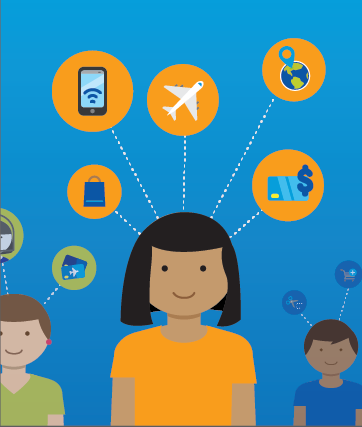
Most companies realize they are sitting on a treasure trove of customer data that has the potential to deliver tremendous business benefits; however, most also have no idea how to realize those benefits. How can companies use their data to bring in more customers, increase the amount they spend, and make them more loyal? How can companies use data to turn unhappy customers into loyal champions of the brand? And perhaps most important, how can companies use that data to drive a significant increase in revenue?
The first question executives often ask themselves is where to begin. Because enterprises are so large and their data so widespread and unwieldy, most executives aren’t sure which method will have the largest ROI in the shortest amount of time. They can focus on savings in procurement, improved efficiencies in operations, increased revenue from sales, and a number of other strategies. To that, we have a simple response: Start with the core of your business — your customers.
The most effective way to tap the value in data is to use it to improve your relationship with customers. That’s a broad statement that encompasses marketing, customer experience, communication, spending patterns, loyalty, and much more. But the key takeaway is the spirit of it — that a company can have a better opportunity to meet its goals by having a personal relationship with each of its millions of customers. Once this is accomplished, all the other elements fall into place.
To do this, companies must focus on customer behavior over time. They need to take note of past issues with products, customer service matters, and the evolution of purchases over several years and then make connections that can help them determine affinities and propensities and predict future behavior. Then they can act on that knowledge in a number of ways, from highly targeted marketing to better damage control in response to a complaint — or, better yet, before the complaint even happens. All of these actions can significantly grow the customer base, improve loyalty, and increase wallet share.
Personalizing Based on Signals
By implementing a data analytics platform, organizations can identify and extract descriptive and predictive Signals, or key variables, that indicate critical customer information, patterns of behavior, and preferences. Companies must identify the descriptive and predictive Signals hidden within their data and use an integrated solution that delivers exactly the right Signals to the right person, at the right time, through the right channel. When they do this well, organizations are able to personalize the customer experience and see significant results.
When companies change their focus from customers’ static traits (member status, location, how long they’ve been a customer, etc.) to their unique behavior patterns and experiences, marketers are provided with a far more comprehensive and predictive understanding of their individual customers. And if companies have a flexible system in place, they can use this information to accommodate all of the use cases mentioned above. Companies that recognize and act on Signals are further empowered to cost-effectively develop innovative use cases that help them interact better with their customers and compete in new ways based on the strength of each customer relationship.
This means marketers can cut through the noise to which their customers are subjected by delivering personalized offers that are based on each customer’s behavior over time. For the customer, it’s the difference between being hounded with ads and emails to shop at a given store they visited once to getting a discount for their favorite anniversary getaway right about the time they typically make a reservation. When delivered at scale, this level of understanding can pinpoint the best treatment for each customer individually.
By analyzing all dimensions of customer behavior — quantity of items purchased, amount spent, where, what, recency, frequency and sensitivity to different types of offers — marketers can ensure that they reach out only when a customer has a high likelihood of accepting an offer. And as a whole, the company ensures maximum value for each interaction with every customer, whether it’s through a customer service representative, a Website, or even a kiosk.
Making Personalization New Again
Of course, personalization isn’t a new marketing strategy. It’s a throwback to the original days of retailing, a time when merchants differentiated themselves with service and a personal touch. Today’s consumer-facing companies aren’t unaware of the value that personalization provides; they’ve simply struggled to digitally scale the concepts across tens of millions of customers.
The days of “cookie-cutter” marketing are over. Companies cannot use a “one-size-fits-all” or even a broad segmentation approach if they want to build their customer base and have current customers come back.
With consumers having more options than ever before, they are seeking companies that treat them like human beings — complex individuals who have specific reasons for their behavior and expect companies to remember them. In the end, it’s about establishing a two-way relationship with the customer, where each individual feels as though the person on the phone or on the other side of the counter or email is really tuned in to who they are and what they want. The companies that deliver on this promise will be the ones that thrive.
To learn how Signals can help you personalize your marketing, download our free white paper, "Personalized Marketing at Scale."
Laks Srinivasan is Co-COO of Opera Solutions and oversees its big data analytics platform and solution development and company performance. He brings over 20 years’ experience in data science in marketing, credit risk management, and customer portfolio management with global leaders in several industries. He was formerly with Fair Isaac as senior director of innovation management and director of go-to-market management. Earlier, he was CEO of ExpenseAdvisor and held positions with Booz Allen Hamilton and Syntel.
This article was originally published on SandHill.com on October 19th, 2015.



